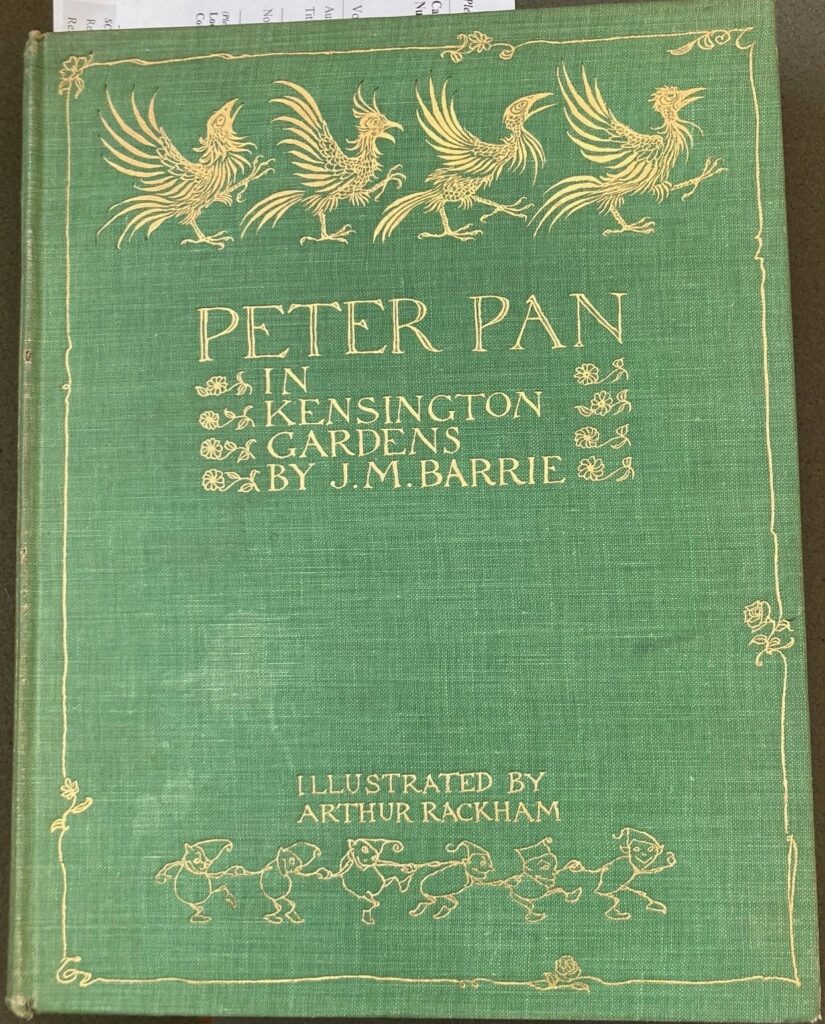
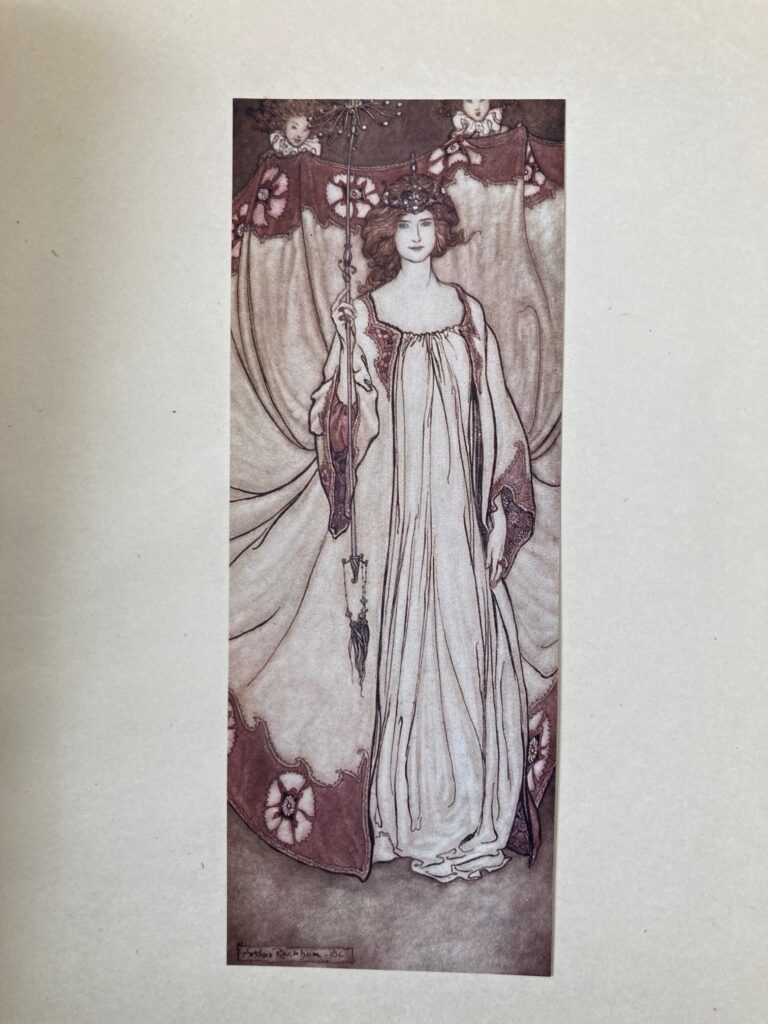
When I first explored this 1906 edition of Peter Pan Kensington Gardens, I was awed by her nearly pristine condition. Despite being 117 years old, she has no wormholes, no dog-eared folds, only one annotated page, and only one rip (at an inner-margin) in over 120 pages. Her pages aren’t brittle, and yellowing is sparse and peripheral. Overall, the pages are mostly still cream-colored and cottony-soft, as she was created.
The book’s age is betrayed mostly by her stained cover and her foxing marks – rusty orange liverspots that organically envelop most of the book, like a granny’s old hands. The spine is deliciously infected by foxing, which has indiscriminately covered gilt illustrations and blank spaces alike. There are also white markings running along the spine, and a white clump near the elf face – glue or candle wax or secret third thing?
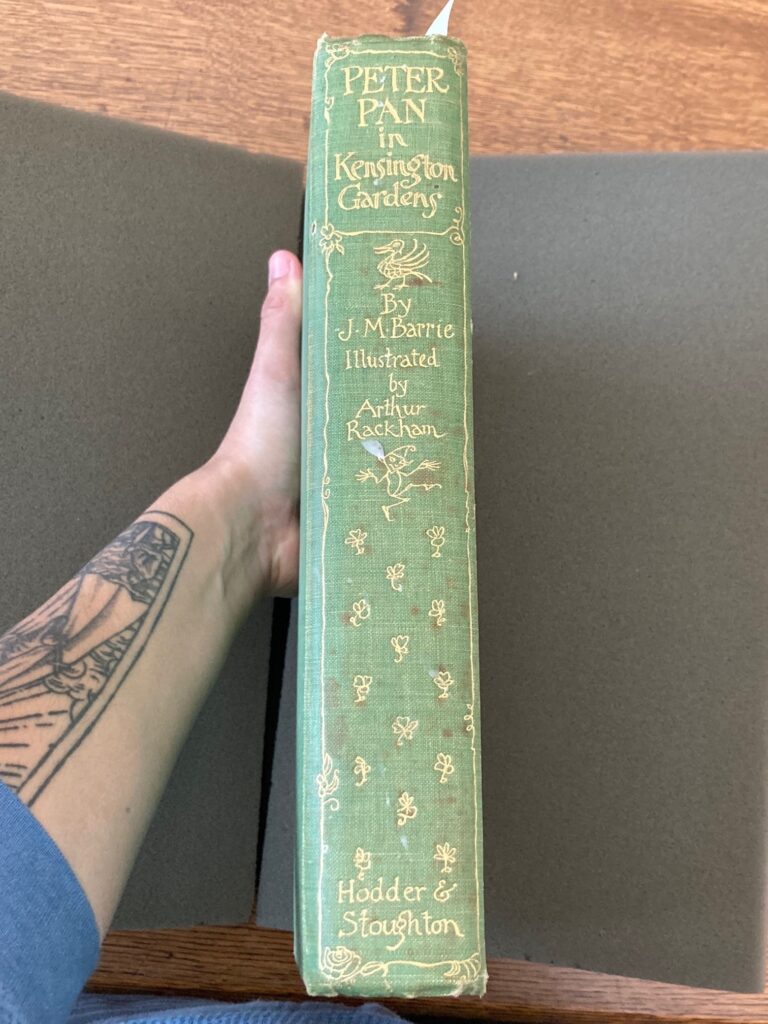
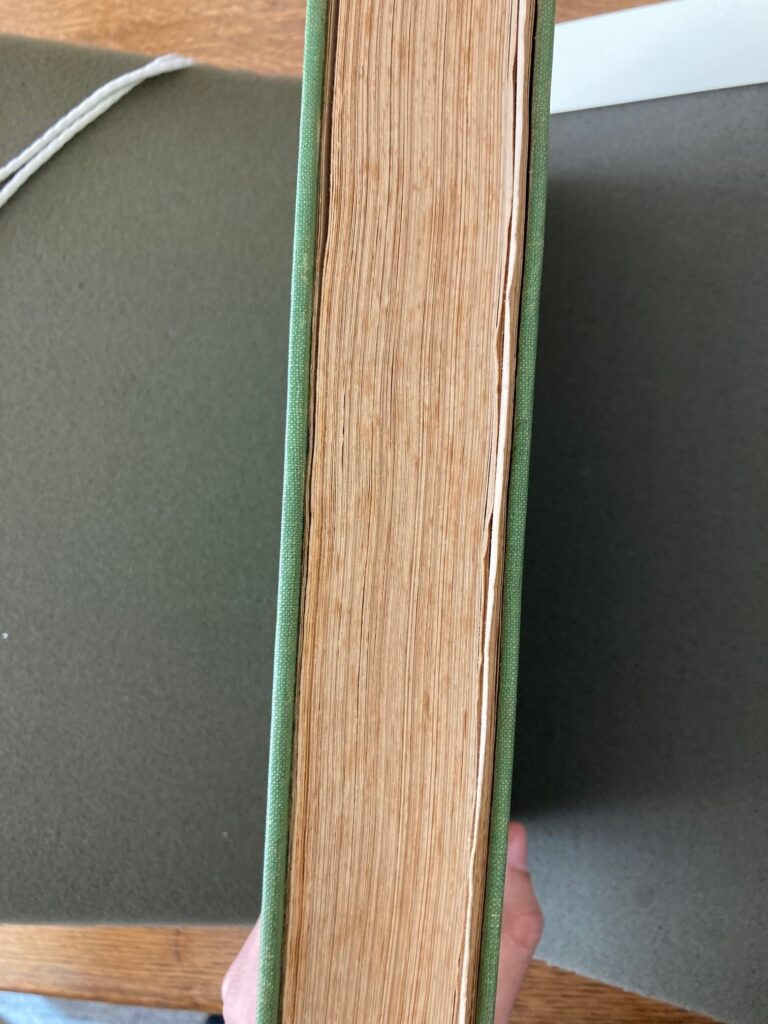
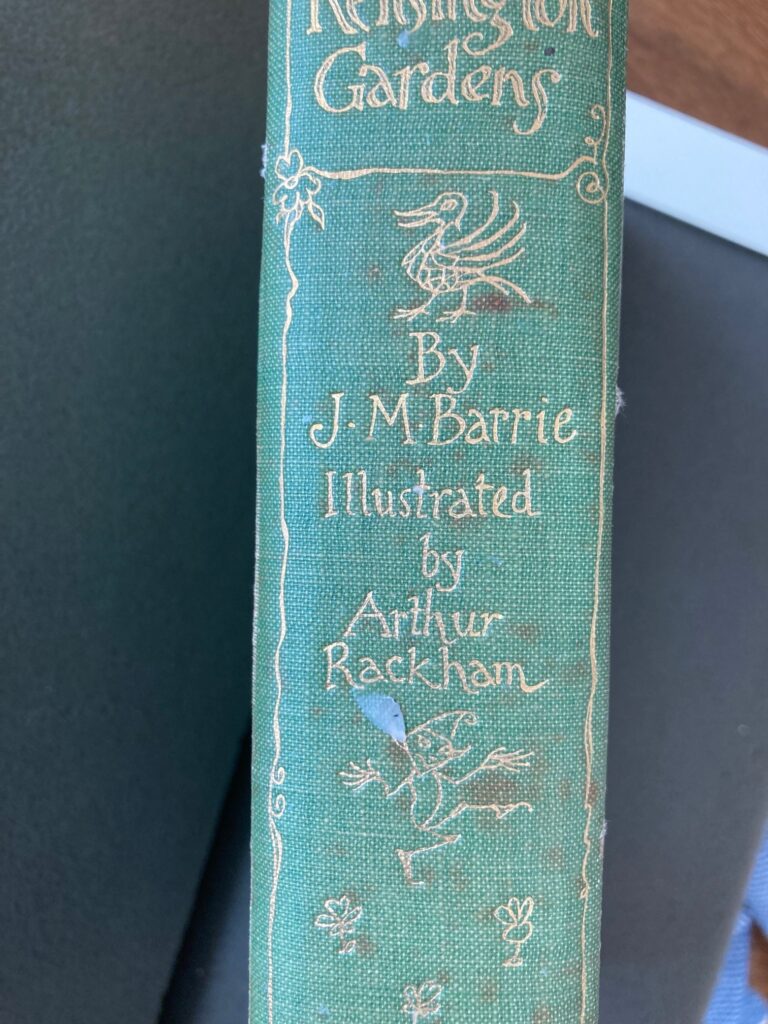
The casing is also littered with white splotches, and inky-black smudges. On the front cover, there’s a significantly large, round, white splatter that has bleached the green cloth. It reminds me of toothpaste stains, like the book was caught in a bathroom crossfire. But by an insolent child holding it hostage in exchange for brushing their teeth? Or sophisticated and hygienic reader/art-lover?
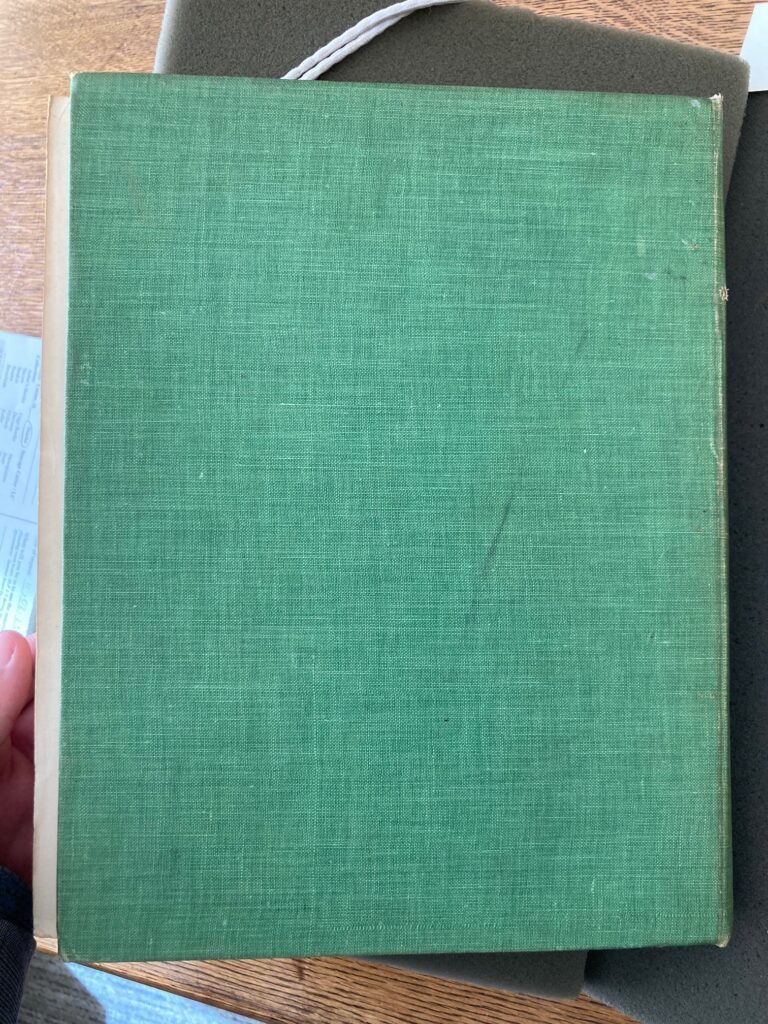
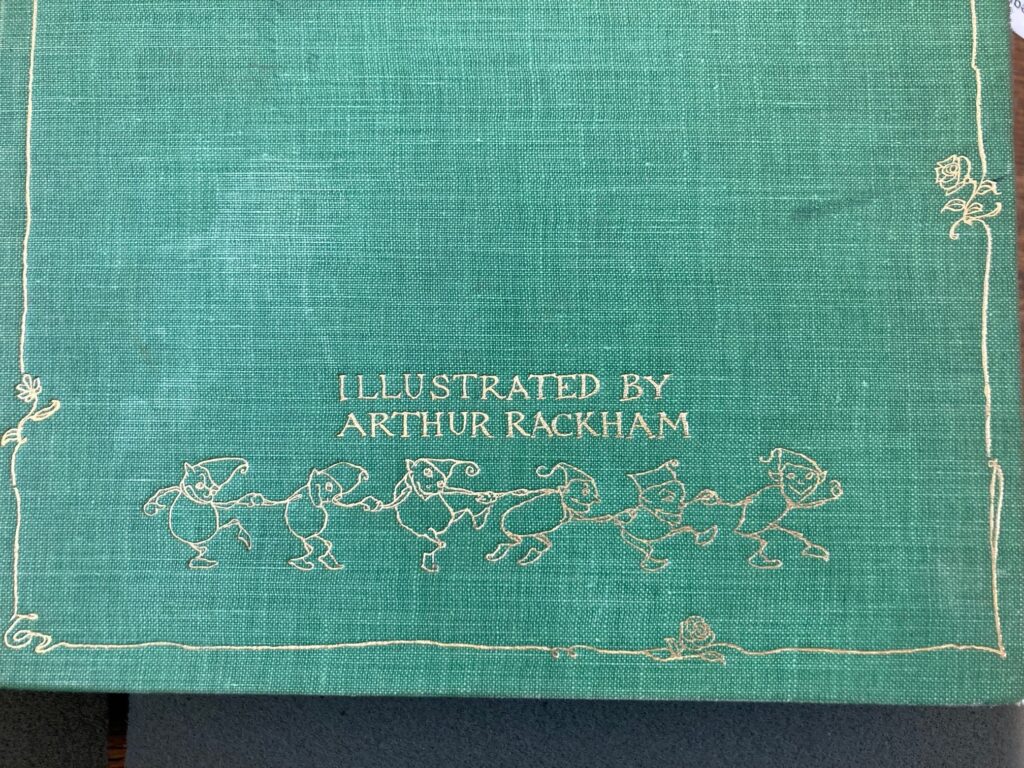


While foxing covers almost every page, the pages with Rackham’s color illustrations are unblemished. These illustration-pages were covered with a tissue-paper enclosure, so as to avoid the clay coating of each image sticking to the other pages. In turn, this veil also protected these pages from the possible humidity, dampness, or bacteria that caused the foxing everywhere else. The preservation of these images points to this book being treated more like an art collector’s item, rather than just a children’s book. Additionally, Special Collections’ citation for the book mentions it having been previously owned by Bruce Rogers, a famous American typographer and book designer in the early 20th century.

In a way, the story pages appear lonely in how untouched they are. I would have loved to see notes tucked between the margins, to voyeuristically peek at what other readers thought about the story and the images. But only one page has annotations. On the recto endpaper, there are three separate annotations in distinct handwriting. In the middle, in pencil, “Enlarged Edition 1912. €30” – the price tag suggests this was inscribed by a European vendor; the date isn’t consistent with the publication year, so perhaps this itself was written in 1912. On the upper right-hand corner, in pen, “{For} Tuppy from H. Christmas 1920”. Perhaps Tuppy was related to the person that would eventually donate this book to Wesleyan. But who was H? Typically, elder family members use their familial titles when they refer to themselves (From: dad, mom, etc.). Simply signing off as “H” implies a non-family familiarity and intimacy between the gift-giver and receiver. The last annotation (and the most obscure) is on the upper left-hand corner, and reads “J.00 CP. 472”. Theoretically, this could be book code for a library filing system, but the code doesn’t actually align with any filing system I could find. PPKG is not a journal, so it wouldn’t be accurately labelled with a J, and neither the author nor the illustrator have the initials CP. Like the other annotations, this code remains a mystery, referencing something that is absent from the page, meaningful to someone out there or at some point, but opaque to me now.

The endpapers have a dark, coffee-like stain on most of the page, but there are circular gaps the stain did not touch. It looks like there were round objects (flowers? scrap papers? coins? buttons?) enclosed in the page when the stains occurred, and these objects were removed afterward, so only their photo negatives remain.

On the verso endpaper, a bookplate sticker dons the Wesleyan University shield and reads “From the Library of Joy Day Buel ‘71”. There is very little information online about Joy, and slightly more information about her husband, retired Wesleyan history professor Richard Buel Jr., who coincidentally passed last week (November 22, 2023). Joy was a freelance editor and author, originally from London but passed away in Connecticut in 1997. I could find no information about how she came to own, nor donate, PPKG.
However, in a 2015 oral history interview with Richard Buel, he said this about Joy:
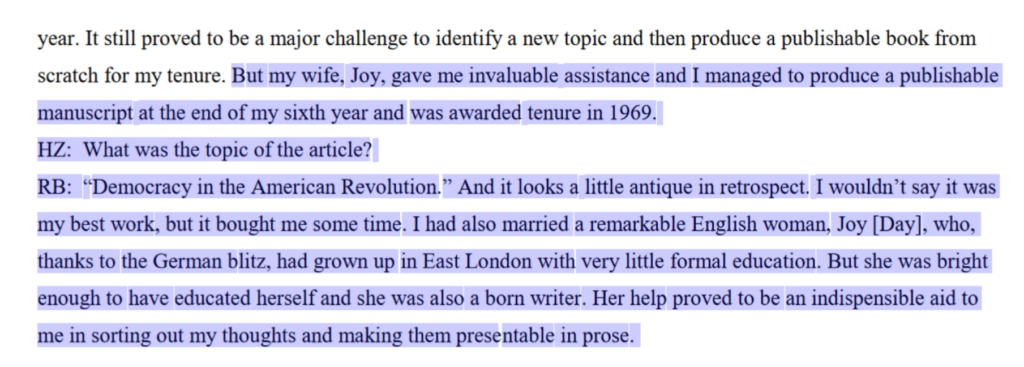
Joy graduated from Wesleyan in 1971, one year after Wesleyan’s co-education was permanently established, and during Richard Buel’s tenure at Wesleyan. I imagine it would have been incredibly hard graduating 1 year after women would be (re)allowed to get a Wesleyan BA. I found the digital copy of the 1971 Wesleyan yearbook “Olla Podrida” online, and hoped to see more of Joy there. The bulk of the yearbook is mostly collage photographs and quotes. I would have no idea if I was staring at a photo of her because most of the photographs of Wesleyan students were caption-less, with no names. Only the yearbook photos for the male sports teams and frats come with names. I breathed a sigh of relief when I finally saw her name listed at the end of the book, in a list of those who received Bachelor of Arts degrees in 1971. Still not much of a record, but at least more proof she existed.

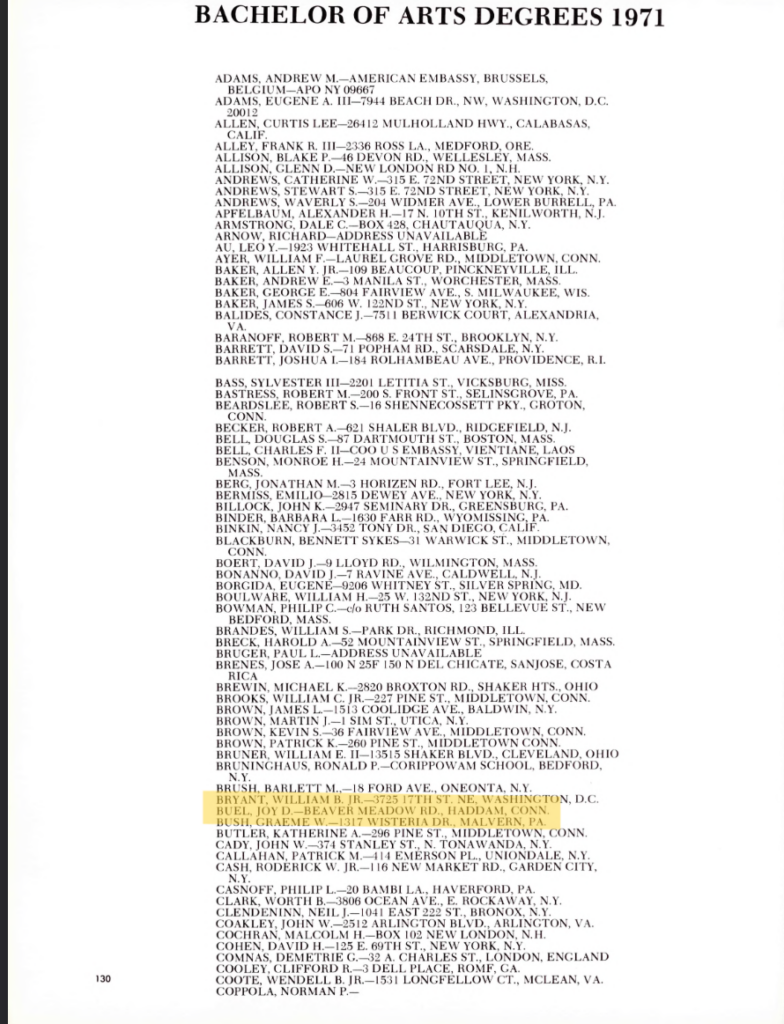
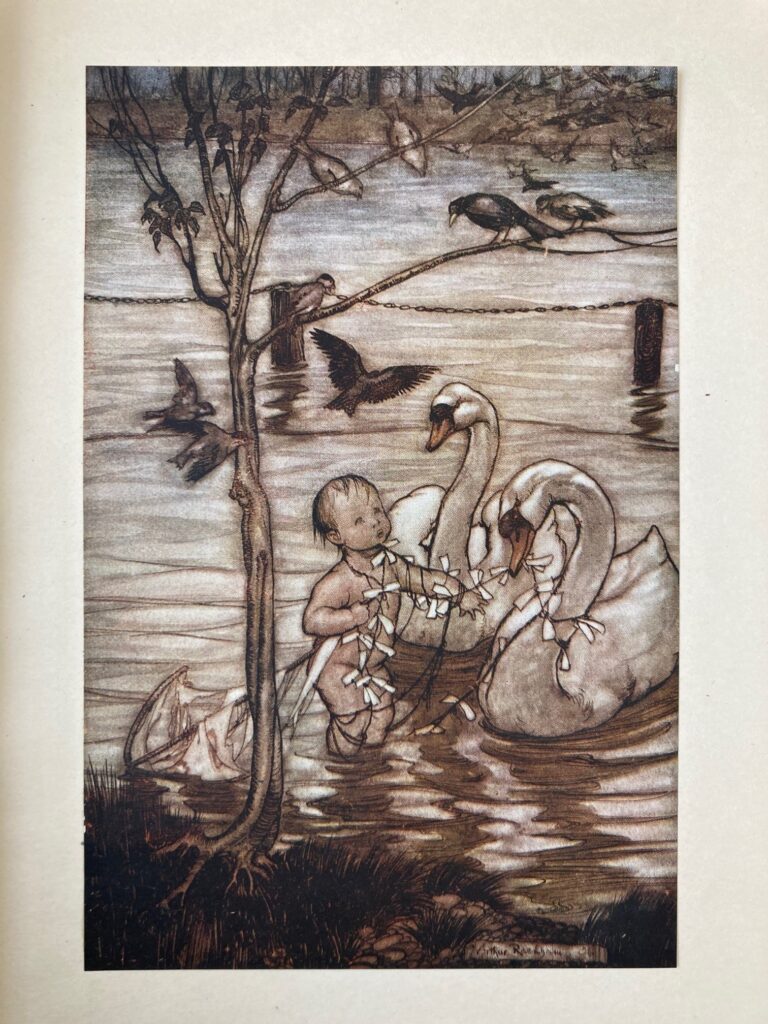
Am I the intended audience for PPKG? Was Joy? I can see how we would both relate to Peter Pan – feeling like a cross between two opposing things, caught “Betwixt-and-Between” identities, misunderstanding how to “play” correctly. It feels meaningful to know that she was another in-between person at Wesleyan, in another in-between time, and that we are connected to each other by this book (and perhaps other things I could find out, with more sleuthing).
Is Special Collections where books go to die, or to live? PPKG lives another day, but has to be requested. Our rendezvous happens under the watchful eye of a surveillance camera. PPKG will never again know grubby hands, annotations, or what it means to travel as a companion. It’s like putting grandma in a care-home – alive in a sterile sense, not-alive in terms of spontaneity. Of course, who’s to say this is worse than the books littered around my house; I can take them out, but do I? This semester, I’ve mingled with PPKG in my observed custody visits to Special Collections more times than I’ve opened any of the books I own. (How dare I…) I wonder if PPKG will be any different in a year from now. Would I be able to tell if anyone else has requested her in the meanwhile? Have I changed her, compared to a year prior? Surely I can’t be the only reader who has touched her since Joy released her. I have a guilty feeling that she will be forgotten in the vast archive, along with the other artifacts Wesleyan has been gifted and/or colonized. Can books be kept company, or just kept?

